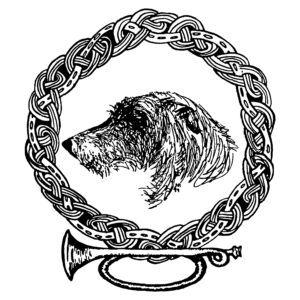A Majestic Breed - The Gentle Giants
So you want to have a giant breed dog and are specifically thinking about the Irish Wolfhound? Here are some thoughts on what its like living with them day-to-day, health concerns, behavioral traits of this sighthound, public interaction, and the in-home family dynamics with you, your children and visitors to the home. This is not meant to be the definitive word on the Wolfhound, but rather a starting point for you to begin your own research!
The Irish Wolfhound is gentle, sensitive to our voice inflection and body language, seldom barks but does howl, and is keenly aware of its footstep placement and overall body movement inside the home. They will shed fur a moderate amount, especially if not groomed on a regular basis. They do not drool, however when they drink water they will drip from their beards onto the floor. Generally, they have good appetites and eat promptly, although some can be finicky and slow-eaters.
The IW is a giant breed dog and is the tallest dog in the world. The standard defines the height and weight of dogs as 32 inches and 120 pounds, and for bitches 30 inches and 105 pounds over 18 months old. You will see many males well over 120 pounds, ranging from 165 to 200. They are tall, heavy and strong.
Their physical stature and weight is something to consider when having food items on countertops (they can easily put their head above the counter), overly tight furniture placement to avoid accidental bumps that may knock something over, and physically moving them if they are sick or injured and are laying down. You should have a plan for their environment and your personal physical abilities to care for them that ensures both of you have a healthy and fun life together.
They love their human family and can be very affectionate, will actively seek your touch and proximity, and enjoy having their massive heads rubbed against your body. They want to be with their "pack" and will ask to be with you or near you. If you are inside the house most likely they want to be there too. If you go outside, expect them to want to go as well! Having a dog door for them to let themselves in and out is a nice quality of life asset for you to have, however giant breed dog doors are not all created equal so do your research and think about how your house is set up!
Most pet owners are familiar with using crates to feed their dogs, provide a place for them to sleep, or as a form of safety and confinement inside the house, hotel or the car when traveling. With the exception of when they are very young, the Wolfhound will quickly outgrow even the largest of crates you will typically see. In general, if a Wolfhound needs to be confined for any reason, owners will use an X-pen which is a folding, portable panel system that can be much bigger than a crate but smaller than a fenced yard and will be used inside the home, outside in the yard, and at dog events you may attend.
Traveling with your Wolfhound will require a car, van or truck with large door openings, and a large space inside the vehicle for them to stand, lay down and turnaround as necessary. Be mindful of large step-up and step-down into the vehicle as this can be a point of potential injury to the dog due to their weight and pressure on their joints.
Wolfhounds successfully live in packs, and will bond harmoniously with other dogs and cats in the home with the proper training and introductions. There are some nuances about having multiple males in the home with bitches, especially bitches in heat. This is the same for most breeds, however separating agitated Wolfhounds can be extremely challenging and dangerous due to their size, weight, and strength. Talk with Wolfhound owners in the club for more details on how they manage their hounds.
The IW is well-behaved and is easily trained in Obedience, Good Citizen and Rally for example. They generally respond best to short training sessions and want to please you, but they are not like some breeds that have boundless energy for repeating training exercises over long periods of time.
Wolfhounds have a very rapid growth rate when young and can be seriously injured in certain circumstances such as moving up and down stairs, jumping off decks or other objects in your home or yard, and aggressive play with dogs larger and faster them them. You will need to be observant and provide guidance and boundaries to your hound in these situations to ensure they remain injury-free during adolescence.
The IW is generally healthy, however they do have some medical issues that an owner should be aware of to recognize signs of early symptoms. Some include aspirational pneumonia, osteoporosis, heart disease, and liver shunt. They typically do not have eye, ear, and skin issues. As a giant breed, they have a lifespan that is shorter than smaller breed dogs and that is generally up to 7-9 years. They steal your heart and leave much too early.
Finally, not only is the Irish Wolfhound an absolute joy to have in your home, when you are out in public with your pup they are like celebrities and the public reacts with amazement and curiosity. Strangers will come over to you, ask to meet your Wolfhound and often share a memory of an Irish Wolfhound somewhere in their past remembering them fondly with a broad smile on their face. Be prepared for the paparazzi...you have been warned!
